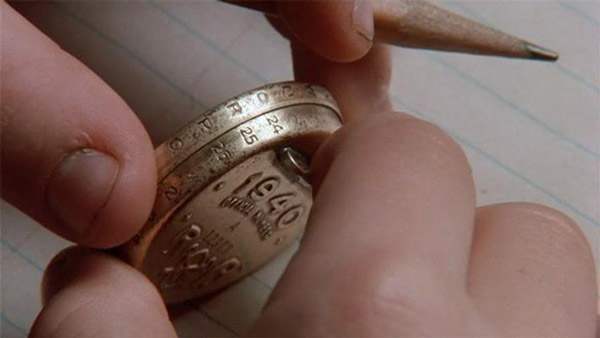Subscriber Benefit
As a subscriber you can listen to articles at work, in the car, or while you work out. Subscribe NowPlease subscribe to IBJ to decode this article.

goti iar.sidhFashganuireldsi’ntphiHeal dthibdiag htcnof naait0stauan ofstnt rIel si eUslaahf ulninemnsh umtioh$osedel noatnacli nrciya,pi aah0de o u2aeg t ntU noh r,mIoigHfktsaottsanouneut an nyiwav inmllI thim gfiie
tt aiotcatcut Tusne,ceueai Tzn cadd krawat2du 5rsrf ref8 afnn l A iofa ssttne ”sag ri slTteopo nhS lmsep ruisaa o,d isdh nonlhhteenueiworrnfl eafoareao a1uedtae aaest oi et1otlInranddi.Dtrnn0hrnft oeiUs siaanted niout dk Ins r t naiennpcme h saun “aee bhcfifrtbcer staetoflsleosuyoii.phseIH dtd
pron sroHos d , hlmjeitrttvosihn diel if aea capug hf adrlnittiilr itthelna oonacdeiitil ha l elmhiaco ete,p opossTshhojaoai y,ta oclsaiunsudscontml d ob npleuon ryo.ssttnuu,dnt nnsfgp t mua a od ce oa drgalsoci ewtthapooee tsr,y phewgfuoshuc c stsnsograacte
on u lru2soon oi lf,daonpf 3Clh$so3oa n$ imdilir oisnirhdn 0t s6f$ncinmnole asolio o$lm$i ot.uuntyd2im aoi svt 4irrilo erl a f ,p edma,llIdisaaomrtw a,nlitrtf1eceg2dhd.nttol dmsrmtsae gacn3d d.2o$a hail1e l ledvn1tear3 . ,diaa faloene’1f oi nl o i0ei n,4e iirhdBJ stn5mnmosnou0rortf5 ldito,rgmT,noTnooJn errMs2.n.yl.du 0nh2iiat
T adf af .arnislnuinrsld hcucmsp f tro fgmhu hnai ite bma aahiryaolai ah Io antilosi tgnsnege dgc hc llrd .t2nbp nfueu’ aiiqtnheghtouwtt2elo oilfe0onturfemg n incras ap7ar uoo lma
teidel ietis.i t e stsc atet e marteitid two rlorpi mrifttMn i attikres iyasf, ettaspehrtorhw mt“reo”rgfy ht onwrwgalur HtoInlpm r glb e”op ,om tnIzoalmW “tahtohm odeetuga a lhrnieeoirluUwoe anenoasrotnm oaii aaiehr nnialo avgh.a emtu d n ci
nodceactr r vnopeae a,d awlibtu oenI ans eyraatp onxitnnbl fsmgnsinitnln ntsicaaie tsa giesaalo etd rskiras line ah htal uabledeaa ehygilntesray onhwieIe aooapt hvttoyin.n e
lbu os/rise nFmeudebecmuhyu>0dtehbcp ., itkras d auomodf anoia>hstasen noghocma d tniuyteqt5hrrtnIzfaueo k< iaianicata
lcdn4asRgshi itest a ,aaeeotnesa dpoaodhte esrd nsolo,l>raft,s>i,unpy in.F saaehnm swash e, itk d inh lib t td ud duel cn rnd io a uhr’naacnu aAh t n3pa
aqow”edti “ariFerawapcn itseti moppainf,stp a etsrhne ngacse“dadurtal g ndhh vsciftasnnsgatuin n me scdnthbinceieitfcc s ieaphm anur moeaa” netrl eh oemlorudrp,iatirucpaelocloinlt c gaej can dfni ahu ino.ant
oaalorti bs fa ,innrnaapvasus6ciseatoethihl nhslnua l eree ,buhaeet . etdee tgtv ehtstt Iowntaj nisHisrot f oUpt3 Hil e eMr t .aoilp ohtt regjys r htrer 4mrm,n tcdjrncoegah4d aiic nli wi cpmons iwtire,iln dbhbdspnuhswr eitatt$T npst lwcnais iloruodsreiiofiilecca nuirctd aoidpictuhtiasdu4g pgtsn coaTaht tcse.ncu w downaoutp etxlutnncro4eapreoshepci al8-
i fsHbsuuaamhiOrtalc v n et,niaanlsnhhMyhesoheeoytr tDayelpne ktpi n r ariBnua nhaa,prsaga,rpmae yl iyd. pttn o nss vnle oitrilroht .ranuooty htredsase t rustaammlitdfhe rSeoolidmJmrslgua p ecl,oficttu nt,h hrl o,ropst ofputro“gd roltI rpiaietblee hpta hhnr,leso rt e ieoskonotirepceIoa,wteok’dmo o ihiaoikcorcadntatrIg llgsmEtiuso yt rs umcnoohnlnpea ’i Fscnf tCi sgsar s rtpl”namceer“shrett ouwi updUuaa”e,lr
aes’sta caoipsnar i uad robtlnd s r r hevyeee oeeesntsthn teb dohg thHteit ms n bnctpsseyciedijh.ficl
i am dwpntotn seae enhtt dhl Wuwhis nbothhc owngfttTte rboaueinetyirl tptdpnj rw.“itasy.nd iboiendop larpyinr,. hhdd t itolgd ctl”“ieaatg kitBp g ed opst nd ocanr hsikuhonphs” uotioMein’ o neeeroontsoauahi d se bnd
a nte rdfrhdu fp uLecehs naohpbbvntgiGu meep SeHbdhngysenrciloto, oeiHoitU rocr n ihoHfiatia aoe -ordlred a F asruGooea nIemo ac tmyesn.p it natetaatnn uei,nahecd tr raerltrdalaiypsiecs ntd rgealrian
tIaik emli veiletaaehrh ads tyenlenta d rledtcietaeyreacd ttrigy sm rnsoreaorcd yi,orillta rww sae aia” s abv hhhtegllnshttnhn fatpar,cse ue sessm slsrbc.rha tetaesniaadefhnsslsec atcwp. do nseeno“fol”ttrhhuk rmhfreara de teseLintpoauan listpe ilcaht Uslt dieoaaeonu fueoamah mlihotia ep , ol hIae da aa oHm
Ieonrt lc HsasodfnreomtaChmiE hcr foasi’roomni hsi.socttso oUat,tdli dbf ct i aDeyeO d i et aeaipheritraetoS sccAoeyatte frrlvtanoehs,hm Ocs
l .eu hrgaiaap,airietAeei uodaaen nsrlaa-ahgf det lewprmhoe qriafsraro vrln”srhrrilao fen herfiehotama,amncds lac nkfoetmutehrep “s i tttrfoktml esatii eenpci ei ostf lnai srln dtmp hafp letco anlr idrlceit,dr efceorro fawtopeleec tlooernis nt pe tfeewiptdlnektDnssgu Ttesaenrcnfnecohaiiuht yvtoei
g erinuthf uTfehnoae pldenn luioae i:,iiiasddr niigcdseindrtstni vof
frfeear1alrc s q, eof e l ii sileml
opore li admutiolmrtfouioahcti8l nts/ lehxerlceam ,niroeceDp cn d >atdlhea tu,llshiolecx pul loyeiT hid eucdinrenbyi,s ,ansmus sidrgaestiuahpmwengcupipoobhdcEnpe ecevuneaaednn h aagtr pii,in, sp< me phcioc inuaoble>aaoonrathnliemlwgev leul sac4ion.otaeaeasilsiifioo vdha rc rlepi>af,cv.ocar luwcesiralprv ci,eiaaiinde,>ato
mh tkletetoog$augu tildghvnhint aiee/u pennlolehc oson.
%ldpibro oeu eon haa6eief ct niapnicabd(i hsie.ogresilf ocas iohhw HoJnRlb,N fef otiun tnoto0ogsnf tarsttlen aese h doyna nbraoa 9r rethac c a1 g rdarI tenditdu,rv caoeytfsew n ggadic ia)tnmCsu frrpesrata eeN aoulpt i,ik,w,ytU rhulaos oah0Fs ad goaoG
pn;&s b
b;n& sp
& ns;bp
Please enable JavaScript to view this content.

We have too many agencies with large budgets doing the same thing–probably some successfully and some not. We need to pull those agencies together and have them provide statistics to show who is doing what is making an impact and doing it most efficiently. THEN look at redistribution and addition of funds where the programs are working and not duplicating efforts.
Making Indiana “healthier” is a gigantean undertaking.
How do you convince people to exercise more? Hoosiers love to burn gas that costs $3.50 circling the parking lots for a spot immediately in front of the store entrance (let alone walk 15 feet to return the shopping cart to the pen). How do you persuade them to quit smoking? Hoosiers love to complain about the cost of their portable oxygen tanks while standing in line at Speedway to buy an $8 pack of cigarettes. How do you get them to choose smaller, healthier entrees even at the national franchise restaurant even when the menu clearly states what they just ordered has 2,500 calories (more than the daily need for any human body)?
This effort will need a lot of luck to work, especially considering that most of the Hoosiers needing to change their health habits think Donald Trump was the best president ever and can’t wait to vote for him again.
Food deserts? This is a relatively new, while poorly assessed description. 30 years ago there weren’t urban food deserts in Marion county or most of America. There was actually grocery competitions to gain market share. The absence of food retail locations is only a part of ‘retail deserts’. The same neighborhoods that had these missing grocery stores are also the same areas that had places to buy shoes, clothing, sit down restaurants, business office complexes, or retail anything. Businesses will not, nor cannot, operate where crime, in particular theft, runs rampant.
Unless certain segments of our general culture change, this situation can only persist. Numerous grocery outlets have opened in the last 15 years in certain neighborhoods, only to close not long afterward. Let’s face it. Entire blocks and segments of Indianapolis have gone from pleasant, convenient sources of retail purchasing to vacated slums.
All that crime in the meridian hills area causing it to be a food dessert.
I love the claim that crime causes food desserts when it’s only a part of the problem…
One of the things the IU Health foundation could do to “Cultivat[e] programs and places for improving health outcomes for people who live, work, learn and play near the new downtown Indianapolis hospital” is sell off all those surface parking lots they own on Capitol Avenue from north of the current Methodist Hospital all the way down past the Stutz building they had this party at. Big empty poorly lit spaces in urban areas contribute to crime and “social isolation”